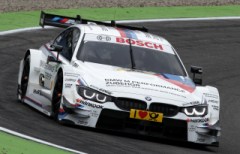
01-25-2010, 09:16 PM
|
 |
Admin
|
|
Join Date: Mar 2005
Location: X5world
Posts: 20,270
|
|
Quote:
Originally Posted by santo

Would it be safe to assume the 8-speed transmission is only available on the 8 cylinder engine like on the 2011 5 series? If it was on all engines then the 35d may get some fuel economy savings which would be worth waiting for a 2011 model. It would also put the N55 engine in play for making similar, if not 'better' numbers than the diesel. I'm on the fence myself about a 2010 35d or wait until 2011.
With the Canadian 5 series press release stating they are coming in June 2010, could they have a later X5 release that says they are coming in April? I hope some official news is posted soon.
|
8-speed transmission is for all X5s and all X6s( see X6 press release here).
Added DPC to the list, which I forgot. DPC+TT8 or N55 are in itself big enough reason for LCI. Tri-turbo diesel xDrive45d will be out in 2011.
Quote:
Dynamic Performance Control switches power between the left and right rear wheels to stabilize the vehicle within milliseconds and help increase traction and lateral acceleration. Handling is lighter and more precise during normal as well as difficult driving conditions.
How Dynamic Performance Control works can best be described in canoeing terms: if you want to turn right when canoeing in the main current, you can brake using the paddle on the right side of the canoe. This is how most common electronic stability programs work. Alternatively, you could use the paddle powerfully on the left side of the canoe in order to have more control in progressing forwards and turning right. This is the principle behind Dynamic Performance Control.
It links the standard rear differential with a mechanical planetary gear set and an electronically controlled multi-plate clutch for each rear wheel. Its mechatronical system combines informatics, electronics and mechanics to process complex data such as the yaw rate, wheel speeds, steering angle and engine torque so that it can react immediately: when required, the system ensures that drive power distribution to the rear wheels can be freely varied and increased on either side as needed. The power distribution can also be displayed on the onboard computer.
Dynamic Performance Control increases directional stability when accelerating out of bends and provides the driver with extra support when dealing with difficult driving conditions. Before under- or oversteer can take place, lateral guided force is used to keep the vehicle on track. Precise steering significantly increases driving comfort and safety.
Dynamic Performance Control is also effective when the vehicle is coasting - when the driver removes their foot from the accelerator - or when they have pressed the clutch pedal. If the rear wheels are on different types of surfaces, Dynamic Performance Control improves traction by supplying more drive power to the wheel with more grip. A wheel torque difference of up to 1,800 Nm can be actively created between the left and right rear wheels. This increases driving stability and allows for much faster acceleration.
As a logical progression to the xDrive all-wheel drive system, Dynamic Performance Control can be matched to all drive concepts and engines. Whereas xDrive variably controls the power distribution between the front and rear axles, Dynamic Performance Control intelligently distributes power between the two rear wheels. This results in precise handling whatever the driving conditions.
|

|